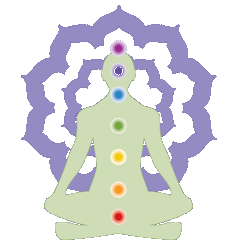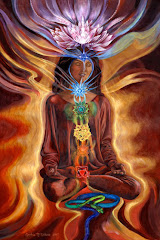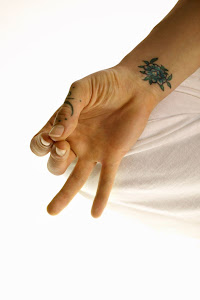The question of how hard to push ourselves in practice is a difficult one to answer, and there are many factors to take into account. First of all, you should of course back off if you ever feel sharp pain in a pose. This may seem obvious, but sometimes we can be so disconnected or competitive that we will push through sharp pain. This is never a good idea. Listen to that pain and release or modify the pose. Call the instructor over if you want assistance.
Intensity, burn, "dull ache", and "dull pain" are sort of a different matter. Again, this is difficult because every person is different and experiences things differently, but normally it is ok to work through these sensations. One can even work fairly intensely if there is a good open dialogue with the body to ensure safe practice. As your practice deepens, it becomes more clear that working through these intense sensations is actually more of a challenge for the mind than the body. As you become more and more able to stay calm and focused on the breath, you will become more able to sit through very intense postures and deepen them.
Staying focused on the breath also helps us learn to drop our competitive nature, and our habits of "encouraging" ourselves with negative thinking (such as: "I could do this last time, so I HAVE to be able to do it right now!"). If we notice that we are pushing ourselves from a negative or competitive place, we should back off a little and observe this, just like we observe everything else that comes up. If feelings of inadequacy come up, we gently observe those, too. All of us have felt negative and inadequate, both on the mat and off. Through yoga, we can learn to remain connected to our divine self, regardless of what emotions are temporarily rearing their heads.
Challenging yourself positively in your practice allows you to move forward. You should practice as if the body were a very precious, priceless vehicle on loan to you (in essence, this is exactly what it is!). Do not take the body, its abilities, or its senses for granted. Do your best in each moment to focus and to maintain a positive attitude toward the breath and the pose. Positivity is like a muscle. If you do not practice it, you cannot draw on its strength when you need it.
We work the muscles themselves very hard during practice. Muscle tremors, shakes, and burning are not necessarily bad things. Sometimes we push through what feel like barriers of exhaustion. As long as we are aware, this is ok. Of course, we should not do things like try handstand for the first time on worn-out arms. But if we are familiar with the poses and practicing safely, we can keep going. If you need an outside perspective, check in with your teacher. He or she can help you determine what is available to you.
We should try to challenge our own individual habits. Ask yourself: "Do I tend to push myself to my limits, at the gym or in other areas of life?" Then perhaps you actually need to learn to be ok with pushing less. Ask yourself: "Do I tend to baby myself when I'm tired or when things feel hard?" If so, yoga is the perfect vehicle to allow you to strengthen your forbearance and stamina.
In the end, only you can decide how hard to push yourself, and this can and should vary with each practice. Just as with all things in life, we must continually seek out that balance between effort and ease.
Subscribe to:
Post Comments (Atom)





No comments:
Post a Comment